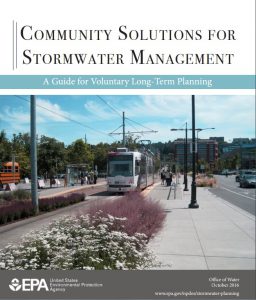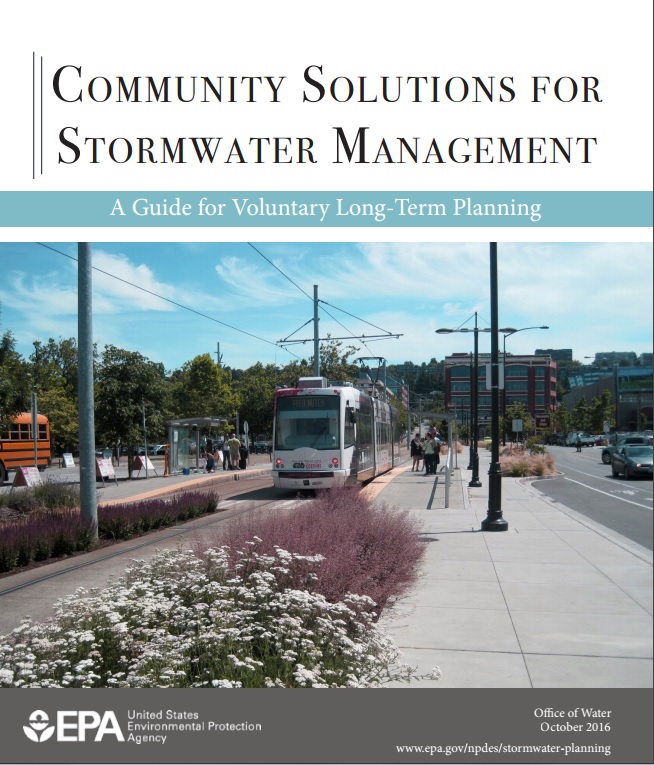
The U.S. Environmental Protection Agency (EPA) released a guide for long-term stormwater management planning that promotes the combined use of both green and gray infrastructure. Viewing stormwater runoff as a resource instead of as a nuisance drives many of the guide’s recommendations. Photo courtesy of U.S. Environmental Protection Agency
To help address the growing problem of runoff pollution in American cities, the U.S. Environmental Protection Agency (EPA) launched a step-by-step guide on Oct. 27 that will advise communities through the implementation or improvement of their own long-term stormwater management plans. The guide aims to prevent flooding as well as help communities reach broader economic and ecological goals.
The draft guide, Community Solutions for Stormwater Management: A Guide for Voluntary Long-Term Planning, will be tested in five cities that will create stormwater plans to serve as national models. Each pilot community will receive $150,000 in technical assistance.
The five cities that will test the EPA planning guide are:
- Burlington, Iowa;
- Chester, Penn.;
- Hattiesburg, Miss.;
- Rochester, N.H.; and
- Santa Fe, N.M.
In addition to providing feedback to improve future versions of the guide, these five communities also will serve as testers for an integrated, web-based EPA Stormwater Toolkit to assist in the assessment, visualization, and implementation of stormwater management measures.
“Many cities have utilized green infrastructure as part of a comprehensive, long-term approach to managing stormwater,” said EPA Office of Water representatives in a press release. “Communities are finding the benefits from such approaches go well beyond helping to meet regulatory requirements and actually turn hazards into opportunities.”
EPA also offers short-term planning guides focused on the management of stormwater discharges from construction and industrial activities, as well as from municipal and transportation sources. Additionally, the agency provides guidance for oil and gas providers toward successful navigation of permitting requirements for pollutant emissions.





